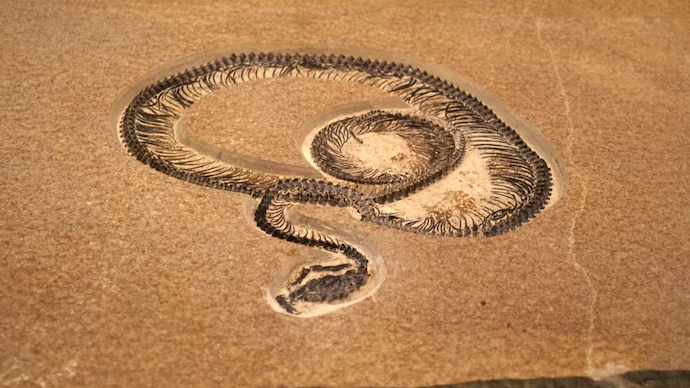Context:
Researchers at the Indian Institute of Technology (IIT) Roorkee have reported discovering fossils of one of the largest snakes ever to exist.
More on the news:
- Researchers say that the snake is estimated to have lived around 47 million years ago during the Middle Eocene period.
- The fossils were unearthed in Panandhro Lignite Mine, Kutch, Gujarat.
About the Snake:

- The snake has been named as “Vasuki Indicus”.Symbolism: The name “Vasuki” refers to the mythical snake often depicted around the neck of the Hindu god Shiva.
- Vasuki Indicus was as large as Titanoboa, one of the largest snakes known to have existed.
- High temperatures in the tropical climate of that time might have contributed to the large body sizes of snakes like Vasuki Indicus.
Characteristics:
- Vasuki Indicus is believed to have measured between 10 to 15 meters in length, comparable to the size of a modern school bus.
- It was a member of the extinct Madtsoiidae snake family but represents a distinct lineage indigenous to India.
- Vasuki Indicus had a broad and cylindrical body, suggesting a robust build.
Behaviour and Habitat:
- Due to its large size, Vasuki Indicus likely killed its prey by suffocation, similar to present-day pythons and anacondas.
- The snake’s habitat was located in a marshy swamp near the coast, and it thrived in a global climate that was warmer than what we experience today.
- It existed during a time when India, Africa, and South America were connected as one landmass.
Significance:
- Provides insight into ancient ecosystems and evolutionary history of snakes on the Indian subcontinent.
- Enhances understanding of how large snakes evolved and adapted to different climates.

